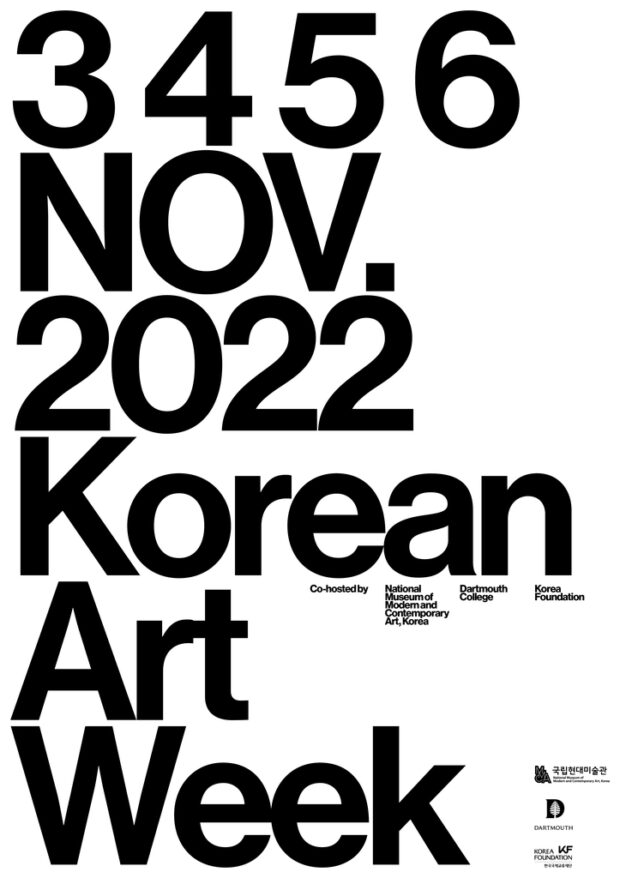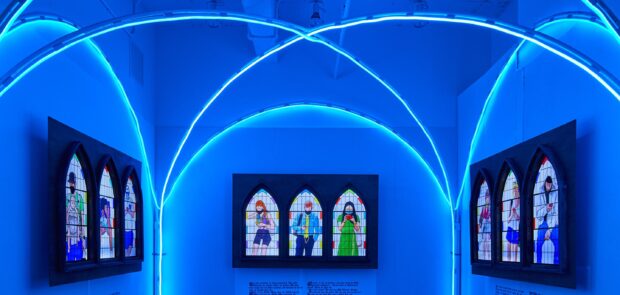As is fitting with his perfectionist manner, American photographer Christopher Williams took an active collaborative role in the design and installation of his career-spanning survey, Christopher Williams: The Production Line of Happiness (on view July 27 to November 2, 2014), at the Museum of Modern Art. First mounted at the Art Institute of Chicago, the exhibition currently resides at MoMA and travels next to the Whitechapel Gallery in London.
Visitors may be puzzled upon arriving in the entrance area outside the exhibition’s galleries. Instead of the typical introductory wall text and related visual references, the entrance walls are covered with liner notes from a recording and installation views from past exhibits. Similar to the recent Alibis: Sigmar Polke 1963-2010 retrospective at MoMA, wall labels have been replaced with a handout. This unconventional use of wall space and lack of information in the galleries are typical of Williams’s shows.

Through this installation at MoMA, Williams challenges the viewer by aiming to avoid a “neutralization” of his work within different spaces. Indeed, he has a history of using non-traditional display practices to create a consciousness of the institutional presentation of art. The artist began to develop his unique approach to display when studying at CalArts under Conceptualists Michael Asher, John Baldessari, and Douglas Huebler. Williams’s professors were renowned for creating architectural interventions and disruptions in museum and gallery shows as a way to complicate conventions of presentation.
In a similar spirit, the artist’s careful consideration of the more minute aspects of the installation produces an awareness of the work, the exhibition, and the museum. The works are uniformly framed and hung on bright white walls, reflecting the technical and formal perfection of much of Williams’s work. The photographs are positioned at chest-level, about a foot below ordinary hanging height. Stand-alone walls constructed throughout show individual works. On the floor toward the center of the exhibition rests a horizontal yellow wall with fragmented text; nearby, a vertical white wall stands with its hinges exposed. Created specifically for the previous installation in Chicago, this latter wall raises questions about the motives that drive display techniques, and the dissonance or consonance they elicit. These walls are the most prominent method used by Williams and the curators to alert visitors to the constructedness of the exhibition itself.

Williams’s photographs can at first appear objective and documentary. His recent work critiques commercial photography and casts a more subjective, incisive eye on the role of the observer in contemporary image-driven culture. He recognizes that impartiality is difficult or even impossible as an agent fully immersed in the system he scrutinizes. Other types of institutionalization have fallen victim to Williams’s playful form of critique, including art production, the art market, and even the categorization of art history.
The curatorial and installation choices of MoMA’s display enhance the experience of the show for Williams’s fans by creating a consciousness of the exhibition itself. At the same time, the sparseness of information may hinder the viewing experience for the average visitor. The exhibition asks that the audience be knowledgeable about the art yet does not readily offer didactic material; this creates a divide between the more informed art beholder and the general public. Consequently, the Williams show subtly points to and questions the function of art museums today. Institutions like MoMA aim to attract such a large multitude of visitors that there is now a need for another expansion; however, when sophisticated exhibitions like The Production Line of Happiness target a certain educated public, MoMA only amplifies the audience divide that Williams exposes.








Be First to Comment